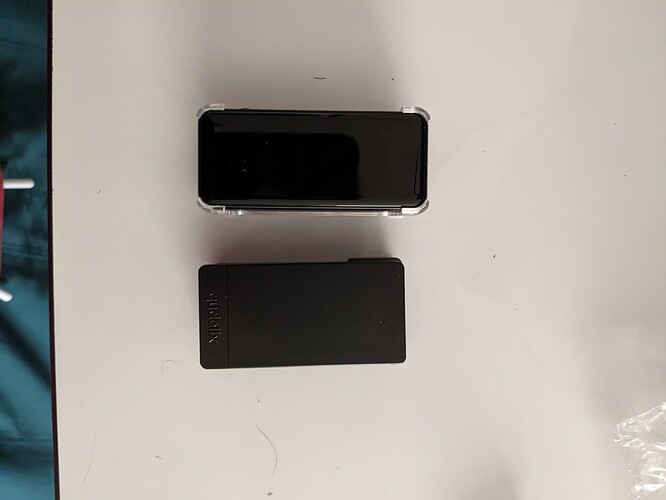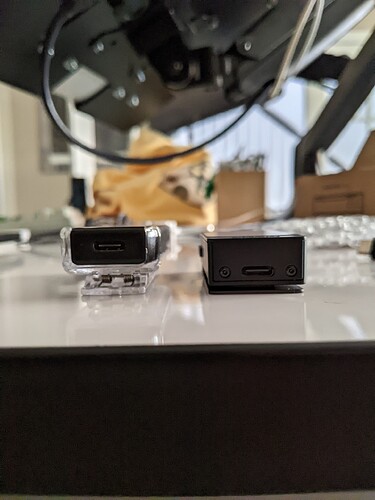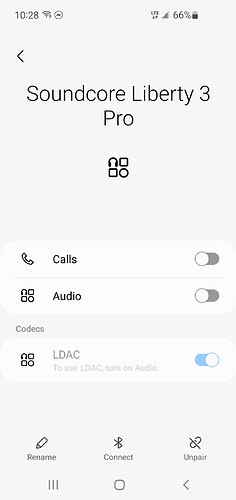Classical Music on Headphones, IEMs, and Earbuds
(Warning: Novella ahead. I’m posting this here because this topic was born out of a question I asked in this forum. Plus, the person most likely to benefit from it is a fellow Classical listener who’s moved from headphones into IEMs as I did, and is about to be surprised by where the quest for the next best Classical IEM might actually lead.)
I started putting these notes together just for myself, and I was reluctant to share them because what do I know, right? There are some real audio ninjas here who know the fine details inside and out, stuff that my mind is only starting to understand in concept but my ears are still struggling to hear. But then I thought, I DO know a lot about the music I love, from the rock music I grew up on to the acoustic jazz I got turned on to later, to the Classical music that finally broke through with me and probably saved my sanity during the pandemic. And even though I spent most of my life as a non-audiophile, I dove in a couple of years ago with my first set of Sennheisers and the hobby has been a daily threat to my bank account ever since.
Classical isn’t the only thing I listen to now (if you see me cutting the lawn, it’s the Clash or the Pixies blasting in my beater headphones), but it does dominate my listening time. So any equipment needs to start by playing this music well or I’m not even considering it. And I can make that rule even simpler by narrowing it down to the violin. If it doesn’t nail the violin, it’s out.
Which means timbre above everything else: the natural, organic sound of a bow being drawn against the strings. If it doesn’t sound organic and real, then no thank you. Tuning-wise, again I can’t go deep into the details like the aforementioned ninjas here, but the violin’s notes live in the midrange with harmonics that extend well into the treble. Even if you love the sound, it can still border on screechy sometimes. Not all audio equipment can handle it well.
(Bass? That would be the lower piano keys plus the lowest notes on the cello which start around 60hz. It’s in the mix but it’s never going to be make-or-break. Sub-bass? Virtually non-existent. Sub-bass thumpers need not apply.)
Going back to the technicalities, the clarity of the notes is going to be almost as important as the timbre. The imaging and the separation of the instruments, if done better will make the whole experience better for me. And then there’s the soundstage, which is the question that brought me here in the first place. Because for all of my listening, I was starting to feel that while my headphones were keeping me too far away from the music, my IEMs were maybe putting me a little too close, at least for extended listening sessions.
Which is how, thanks to two or three few fine people here, I came to buy my first set of decent earbuds. And now that I have all three forms of listening contraptions on hand, I can compare what they do for my own ears while playing my library. So here goes nothing, in case there’s another Classical listener here who might be following a similar path.
All listening is done through a BTR5 connected to an Android phone playing UAPP, and here are my test selections:
Solo Violin: Bach Sonata #1, Rachel Podger (baroque violin with gut strings, a real timbre test!)
Solo Piano: Prokofiev Sonata #6, Steven Osborne
String Quartet: Shostakovich #2, Quatuor Danel
Symphony: Beethoven #3 (Eroica), Vanska/Minnesota
Headphones: Sennheiser HD599. Like I said, my first real audiophile purchase. If I knew then what I know now, I would have spent a little more for something in the HD600/650/6xx family and started from that platform. But the HD599 are quite competent and I’ve even heard them referred to as an audio “gateway drug,” which was very true for me.
This is a neutral, open-backed headphone. All four tracks are played with good timbre and detail. I’m not going to go too deep here, because it’s not about the headphone but where it led me: In all cases the soundstage is expansive. As in, maybe too much so? I feel like I’m sitting in the concert hall well back from the stage. I spent so many hours listening to Classical music on this set, and I still do, but mostly when I want the music to be playing somewhere in the background when I’m doing something else. Wishing for something more engaging and immediate, I started spending way too much time checking out reviews for what to spend money on next. And I’m sure I’d be on headphone set #4 or #5 by now, if I didn’t get sidetracked by:
IEMs: Moondrop Aria, HBB Olina, JVC FDX1 (plus a few other chi-fi sets I gave away). I never saw this coming, never thought I’d want to jam little speakers in my ear canals, but I happened to catch a review of the Tin T2 and thought, what the hell, they’re cheap. And what a revelation they were! There’s such an intimate sensation of having the music brought right into your ears this way. It was like nothing I’d ever heard before, and so I spent the past year plowing through IEM reviews instead of headphone reviews. I was persuaded early on to stick with single DD sets because of the timbre. I picked up some Arias, and then the FDX1s were my big 2021 Christmas present. I was about to try the Oxygen this year when I heard about the Olina, so I got those instead.
I also picked up the CRA on a lark (for the price, why not?), and I’ll mention it here because it’s my only V-shaped IEM. It’s not fair to criticize a $15 IEM for not doing well in a genre it wasn’t designed for, but I listened to it today just for confirmation. And yeah, those high notes in the Bach Sonata just murdered my ears and I didn’t bother trying it on anything else. I’m sure it would be fun for other music, but “recessed mids” are exactly what you don’t want for mid-centric music. So moving on:
Moondrop Aria handles the high notes in the Bach with no pain. The timbre is very good. The soundstage is IEM-typical, maybe slightly better than others in its price range. I’m sitting very close to both the solo violin and the solo piano. The players in the quartet are closely arranged in an arc around me and well-separated. For the symphony, I’m sitting just behind the conductor but here the busier passages finally start to feel a little congested. Overall, it’s a fine IEM. Just fine. Without being able to put my finger on it, I feel like it needs a little more sparkle and excitement. Or something.
My Olina has the double mod (two original filters on the nozzle). That’s important to note, because I suspect it is limiting the soundstage. For my ears, though, the double mod is essential, because otherwise the upper mid peak is too much for me. (Without it, for instance, I couldn’t hang in for those high notes in the Bach sonata.) Timbre is excellent, a notch above the Aria for me. I can hear every detail of the solo violin, even if I’m sitting very close. In the solo piano, I’m next to Mr. Osborn, turning his pages. In the quartet, they’ve pulled up a fifth chair between the second violin and the viola. In the symphony, I’m conducting it myself, and again the busier passages start to get a little congested. But overall, there’s something addictive about the Olina and that’s why it’s on my desk while the Aria is in a box. If you want to be very close to the music and hear beautiful timbre, I can’t imagine something much better for under $100.
If you know the history of the FDX1, you know that a classical listener modded the original FD01 with some baffling and then Drop codified this mod in their version. I’m using the most baffled nozzle. The soundstage is noticeably larger on all tracks: I’m sitting a few feet farther away from the violin, the piano, and the quartet, and I’m on the edge of the stage for the symphony. In all cases, the level of detail is elevated and the instruments are well separated, even in the symphony. (The FDX1 is more than twice the cost of the Olina and three times the Aria, so this shouldn’t be shocking.) The one slight drawback is the less than perfect timbre. The notes don’t have a completely natural decay, and some people even describe the timbre as metallic. As big a timbre-head as I am, I will admit that I don’t hear it that badly. Maybe it’s the baffling at work, but I’m actually okay with the timbre overall. Any drawback is more than made up for by the other superior technicalities, which is why I listen to this IEM more than any other.
And so… It’s May 2022 and I’ve got my FDX1 (with occasional relief pitching by the Olina) and I’m just wondering if there’s an IEM out there with excellent timbre and just a little more soundstage, because even the FDX1 is close enough to wear me out a little sometimes. Which is how I happen to stumble in here and get told about:
Earbuds. Earbuds??? I’m sure I’m not the only one who went from not knowing the basic difference between earbuds and IEMs… to feeling smug because I knew IEMs are so much better… to finding out about this special market of high-quality earbuds that offer just as much as IEMs and in some ways more… all for generally less money! My mind has officially been blown twice in one year.
So I bought the Bell LBBS ($55) and they’ve been in my ears non-stop for the past three days. Great timbre, more soundstage without being too much more. The solo violin sounds so much better on this unit than anything else I’ve ever had in my ears. Same with the quartet. Anything with just strings = perfection. For the piano, the LBBS probably also gets the slight edge. (The FDX1 does rock the piano pretty well, but the earbuds give it a little more reverberation.) For the symphony, sitting in the front row instead of on stage is appreciated, even if I could use a little more detail. (But then this is just a $55 set.)
Which leaves me with only one question: Now that I’m converted, what’s next? I’ve been reading through the posts on the earbuds forums (here and elsewhere) so I know the general landscape. Of the established brands, it seems like the Chaconne is the natural choice. (Bass light, I know, but acceptable for Classical? Plus that name! Chaconne!)
Beyond that, I know that the DIYers are killing it in this market. Are one of those units the better choice for this music?
No matter what, I just have to say a big THANK YOU for turning me on to earbuds! It was a nice little surprise and maybe a distraction from so many other things in the world that are currently burning.



